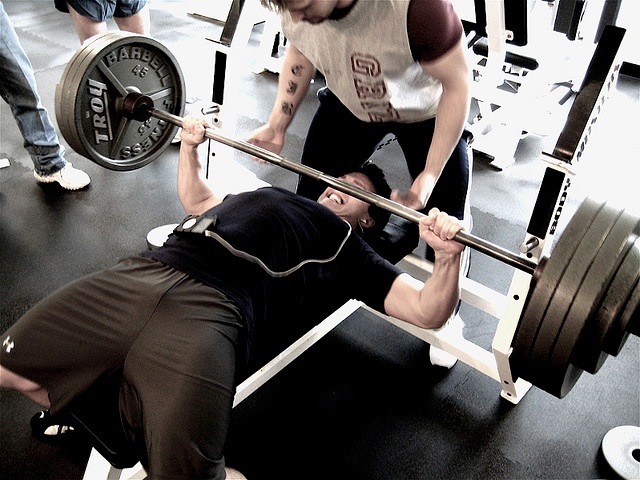Changing Up the Deload Week: A Call for Competition
In the realm of strength and conditioning programs, where athletes strive to push their physical limits and optimize performance, the concept of the Deload Week has emerged as a pivotal component. The Deload Week refers to a planned period of reduced training intensity and volume, allowing the body to recover, repair, and adapt. However, the significance of the Deload Week extends beyond simple recovery. It provides athletes with a unique opportunity to explore new movements and challenge themselves through obstacle courses. This will help foster growth, adaptability, and overall performance enhancement.
The Purpose of the Deload Week
The primary objective of the Deload Week is to provide the body with an opportunity to recuperate and recharge. Regular intense training places significant stress on the musculoskeletal system, leading to fatigue, potential overuse injuries, and mental exhaustion. By implementing a deload week, athletes allow their bodies to recover and adapt, preventing burnout and maintaining long-term progress. During this period, training volume and intensity are purposefully reduced, giving the body a chance to repair the micro damage done to tissues, restore hormonal balance to a more homeostatic environment, and replenish energy stores.
Mental Rejuvenation
The physical benefits of the deload week are closely intertwined with mental rejuvenation. Continuous high-intensity training can take a toll on an athlete's mental state, resulting in decreased motivation, focus, and drive. The deload week provides an opportunity for mental relaxation and rejuvenation. By stepping away from the relentless demands of intense workouts, athletes can rediscover their passion, restore mental clarity, and rekindle their enthusiasm for training. This mental respite is essential for maintaining long-term commitment and achieving sustainable success in strength and conditioning programs.
Exploring New Movements
Beyond the recovery aspect, the deload week offers a unique chance for athletes to step out of their comfort zones and explore new movements. During regular training cycles, athletes often focus on a specific set of exercises to target their desired goals. However, this singular focus can lead to stagnation and limited overall development. By incorporating novel movements during the deload week, athletes challenge their bodies in different ways, stimulate new muscle groups, and enhance overall athleticism. Exploring new movements not only helps overcome plateaus but also promotes neuromuscular adaptation, coordination, and improved movement patterns.
Obstacle Courses
A Test of Versatility and Resilience: Obstacle courses are an excellent addition to the deload week regimen. These courses present athletes with unique challenges that test their strength, agility, flexibility, and problem-solving abilities. By engaging in obstacle courses, athletes improve their functional fitness, train their bodies to adapt to unpredictable situations, and enhance their ability to overcome physical and mental obstacles. The diverse movements required to navigate through obstacles challenge multiple muscle groups and stimulate proprioception, coordination, and balance. Furthermore, overcoming these challenges boosts confidence and mental fortitude, instilling a sense of accomplishment that carries over to other aspects of training.
Examples Of Obstacle Courses & Challenges
Obstacle Course
| MB Slams (20 Lbs MB) |
x20 |
| Burpees (No Push Up) |
X30 |
| Crossover Sled Drag (135 lbs) |
x4 trips |
| Assault Bike |
X50 Cal |
| Rower |
x1600 M |
(The winner is the fastest time to completion)
Competition (3x3 Minute Round)
| E3MOM x3 rounds |
|
| Hand Release Push Ups |
x8 |
| Assault Bike |
x10 cal |
| KB Swings |
x8 |
| Rower |
xMAX |
(The score is Rower calories. Record the score for each round, the highest total score wins.)
Obstacle Course
| Box Jump Overs |
x10 |
| DB Squat To Press |
x20 |
| Sled Explosive Row Down/Sled Push Back (2 - 45 lbs Plates) |
x4 trips |
| Plank With Pull Thru (Wide stance) |
x20 each side |
| Ski |
x40 Cal |
(The winner is the fastest time to completion)
Competition (4x2 Minute Round)
| E2MOM x3 rounds |
|
| DB Carry 50 lbs |
3xD/B |
| Assault Bike |
xMAX |
(The score is Assault Bike calories. Record the score for each round, the highest total score wins)
Obstacle Course (2 rounds for time)
| C2 Bike |
X800 M |
| Burpee To Pull Up |
X10 |
| Alternating Lunges |
X20 total (10 each) |
| Push Ups |
X30 |
| MB To Target |
X40 |
| Rower |
X50 Cal |
(The winner is the fastest time to completion)
Competition (12:00 max rounds)
| Trap Bar Carry |
X50 ft (down and back) |
| Assault Bike |
X20 Cal |
| Inverted Row (BW only) |
X Max Reps |
(The winner is given to whoever gets the most reps accumulated on the inverted row. Once the 12 minutes on the clock stops, the athlete stops. No finishing the round that the athlete was on)
Notes To Consider When Programming Obstacle Courses & Challenges:
Note 1:
While deloading, the primary lifts still can be performed. Following standard deload parameters, the intensity ranges should fall somewhere between 50-65% of a 1 rep max. Volume ranges typically are 2-4 sets of 4-6 reps.
Note 2:
I do not agree with any obstacle courses or competitions that have a duration of over 30 minutes. This primarily stems from not wanting to create too much metabolic stress on the human body, which in turn can result in increased DOMS and overall central/peripheral nervous system fatigue.
Note 3:
Let the athletes have fun and compete. Any strength and conditioning program can take a toll on the human body within an entire phase. It is beneficial to allow for new movement patterns and mental stressors within a deload week. The competitive aspect of the competitions and obstacle courses allows for the athletes to not only get a break from rigorous training but have some good old fashion trash-talking occur. “Bragging rights” can go a lot further than most people know in certain cultures of training.
The deload week is an indispensable element of any strength and conditioning program. It allows athletes to reap the benefits of recovery, preventing overtraining and burnout while fostering long-term progress. Moreover, the deload week presents an opportunity for mental and physical fatigue to decrease at the end of a training phase.
Subscribe to our blog
Subscribe to receive the latest blog posts to your inbox every week.
Related posts

Deceleration Training: Building Better Brakes

Lions' Suh Has Awkward Encounter on Discovery's "American Muscle"


